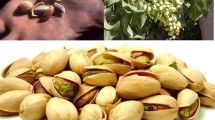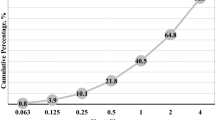Abstract
Disposing of waste causes the majority of environmental and economic issues. Industrial and natural waste usage was necessary to balance construction requirements, environmental sustainability, and conservation of landfill space. The waste of red mud and pistachio shells caused environmental effects. The primary objective of this work is to provide a rough assessment of the effectiveness of using waste materials such as red mud and pistachio shells as partial replacements for cement and fine aggregate, respectively. In the mortar ratio, the proportions of cement to aggregate were 1:3, and the water-to-cement ratio (W/C) was 0.45. In this investigation, red mud was used to replace 10% of the cement, and waste pistachio shells were used to substitute fine aggregate from 5 to 30% of the mortar mix. Different mortar combinations were tested for density, water absorption, compressive strength, and thermal conductivity. The primary findings reveal that red mud and pistachio shells may partly replace the cement and sand in the mortar mixture while still increasing the mortar’s characteristics. When red mud was added to 10% of the mortar at age 28 days, the compressive strength was 30 MPa. Also, when red mud and pistachio shell wastes were added to mortar, the maximum compressive strength at (CMRP2) was 54.8 Mpa. The mortar’s density was reduced when the replacement of two additives increased. Also, adding red mud to the mortar decreased the water absorption after 28 days, while pistachio shells had the opposite effect. The thermal conductivity test results were positive, with a decrease in thermal conductivity with increased additive waste content.






Similar content being viewed by others
Data Availability
All data will be available on request.
References
Rasool DA, Abdulkarem MA, Abdulrehman MA (2020) The Effect of adding recycled Waste on the Mechanical properties of concrete, defect and Diffusion Forum. 398:83–89
Mais A, Abdulkarem (2020) Dalia Adil Rasool and Baydaa Jaber Nabhan, utilization of Olive and Pumice stones to improve the Thermal properties of Cement Mortar. Int J Nanoelectronics Mater 13:181–188
Rasool DA, Mais A (2022) Abdulkarem, Manal Hamed Jasem. Improvement of the Cement Mortar Properties using recycled Waste materials. Int J Nanoelectronics Mater 15(2):155–162
Bishetti PN, Pammar L (2014) Experimental study on the utilization of industrial waste in concrete. Int J Tech Res Appl 2320–8163:49–52
Amritphale SS, Anshul A, Chandra N, Ramakrishnan N (2007) A novel process for making radiopaque materials using bauxite—red mud. J Eur Ceram Soc 27:1945–1951
Nuruddin MF, Bayuaji R, Masilamani MB, Biyanto TR (2010) Sidoarjo mud: a potential cement replacement material. Civil Eng Dimension 12:18–22
Nwangwu AC (2015) May. Genetic variability in a representative ‘Kerman’ x ‘Peters’ population of pistachio (Pistacia vera L.) orchard. M.sc. Thesis of Biotechnology in the College of Science and Mathematics California State University, Fresno
Sethy K, Sitha RK, Barpanda S, Bhoi BR (2019) Experimental investigation of strength properties of red mud concrete. AIP Conf Proc 2158:020015
Metilda DL, Selvamony C, Kumar RA, Seeni A (2015) Investigation on optimum possibility of replacing cement partially by red mud in concrete. Sci Res Essays 10:137–143
Sapna BT, Aravindhraj M (2018) Influence of red mud as a partial replacement of cement with hydrated lime. Int Res J Eng Technol 5:49–60
Sawant AB, Kamble DB, Shinde TB (2016) Utilization of industrial waste (red mud) in concrete construction. Int J Innov Res Sci Eng 3:25–37
Wang P, Liu DY, Kong Y (2012) Physical and chemical properties of sintering red mud and Bayer red mud and the implications for beneficial utilization. Materials 5:1800–1810
Nikbin IM, Aliaghazadeh M, Charkhtab SH, Fathollahpour A (2017) Environmental impacts and mechanical properties of lightweight concrete containing bauxite residue (red mud). Journal of Cleaner Production
Alsalami ZH (2017) Study the effect of partially replacement sand by waste pistachio shells in cement mortar. J Appl Adhes Sci 5(1):12. https://doi.org/10.1186/s40563-017-0099-3
Modani PO, Vyawahare MR (2013) Utilization of bagasse ash as a partial replacement of fine aggregate in concrete. Procedia Eng 51. https://doi.org/10.1016/j.proeng.2013.01.007. :25 – 9
Hilal NN, Sahab MF, Ali TK (2020 Jan) Fresh and hardened properties of lightweight self-compacting concrete containing walnut shells as coarse aggregate. J King Saud UniversityEngineering Sci 16. https://doi.org/10.1016/j.jksues.2020.01.002
Sada BH, Amartey YD, Bakoc S (2013) An investigation into the Use of Groundnut as fine aggregate replacement. Niger J Technol 32(1):54–60
Obilade IO (2014) Experimental study on rice husk as fine aggregates in concrete. Int J Eng Sci 3(8):9–14
ASTM C150 Standard specification for Portland cement
Iraqi, Specification (1984) No.5, Portland cement. Baghdad
Iraqi, Specification (1984) No.45, aggregate from natural sources for concrete and construction. Baghdad
ASTM C 109 M -07e1 (2008) Standard test method for Compressive Strength of Hydraulic Cement Mortars (using 2-in. Or [50-mm] cube specimens. ASTM International, West Conshohocken, PA, USA
ASTM C188-17 (2017) Standard test methods for density of hydraulic cement. ASTM International, West Conshohocken, PA
ASTM C1058-03 (2010) Standard practice for selecting temperatures for evaluating and reporting thermal properties of thermal insulation and C177-10 standard test method for steady-state heat flux measurements and thermal transmission properties by mean of the guarded hot plate apparatus. ASTM International, West Conshohocken, PA, USA
Ortega J, Cabeza M, Tenza-Abril AJ, Real T, Climent MÁ, Sánchez I (2019) Effects of Red Mud Addition in the microstructure, durability and mechanical performance of cement mortars. Appl Sci 9:984
Senff L, Modolo R, Silva AS, Ferreira V, Hotza D, Labrincha JA (2014) Influence of red mud addition on rheological behavior and hardened properties of mortars. Constr Build Mater 65:84–91
Neville AM (2011) Properties of concrete. Wiley, New York and Longman, p 844
Al-zwainy F, Zaki RI, Al-Saadi AM, Ibraheem F (2018) Validity of artificial neural modeling to estimate time-dependent deflection of reinforced concrete beams. Cogent Eng 5:14477485
Afridi BZ, Shahzada K, Naqash MT (2019) Mechanical properties of polypropylene fibers. J Appl Eng Sci 17:116–125
Ribeiro DV, Morelli. USE MR, OF RED MUD AS ADDITION FOR PORTLAND CEMENT MORTARS. 55º Congresso Brasileiro de Cerâmica, 29 de maio a 01 de junho de 2011, Porto de Galinhas, PE, Brasil
Viyasun K, Anuradha R, Thangapandi K, Kumar DS, Siva AK, Gobinath R (2020) Investigation on performance of red mud based concrete. Materials Today: Proceedings
Manfroi EP, Cheriaf M, Rocha JC (2014) Microstructure, mineralogy and environmental evaluation of cementitious composites produced with red mud waste. Constr Build Mater 67:29–36
Boukhelkhal D, Guendouz M, Bourdot A, Cheriet H, Messaoudi K (2021) Elaboration of bio-based building materials made from recycled olive core. MRS Energ &Sustb 8:98–109
Barreca F, Fichera CR (2013) Energy Build 62:507–513
Korjenic A, Petranek V, Zach J, Hroudova (2011) Development and performance evaluation of natural thermal-insulation materials composed of renewable resources. J Energy Build 43:2518–2523
Sarat Kumar Das,Shamshad Alam,Bh Rao.Characterization of Coarse Fraction of Red Mud as a Civil Engineering Construction Material. J Clean Prod, 168 (2017) 679–691
Acknowledgements
The researchers appreciate the help of Mustansiriyah University in Baghdad, Iraq (www.uomustansiriyah.edu.iq).
Funding
No funding Information available (no fund organization but authors will choose to publish under the traditional publishing model (no APC charges apply).
Author information
Authors and Affiliations
Contributions
All authors contributed to the study conception and design. Material preparation, data col-lection and analysis were performed by [Mais A. Abdulkarem 1, Dalia Adil Rasool2, and Baydaa jabber Nabhan3]. The first draft of the manuscript was written by [Mais A. Abdul-karem] and all authors commented on previous versions of the manuscript. All authors read and approved the final manuscript.
Corresponding author
Ethics declarations
Informed consent
Authors consent to the ethics.
Conflict of interest
The authors declare that they have no competing interests.
Additional information
Publisher’s Note
Springer Nature remains neutral with regard to jurisdictional claims in published maps and institutional affiliations.
Rights and permissions
Springer Nature or its licensor (e.g. a society or other partner) holds exclusive rights to this article under a publishing agreement with the author(s) or other rightsholder(s); author self-archiving of the accepted manuscript version of this article is solely governed by the terms of such publishing agreement and applicable law.
About this article
Cite this article
Abdulkarem, M.A., Rasool, D.A. & Nabhan, B.J. A study of the effect of industrial and natural wastes on cement mortar properties. J Build Rehabil 9, 65 (2024). https://doi.org/10.1007/s41024-024-00415-5
Received:
Revised:
Accepted:
Published:
DOI: https://doi.org/10.1007/s41024-024-00415-5




